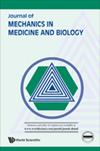基于残差单元和改进U-net模型的脑肿瘤磁共振图像深度学习分割新方法
IF 0.6
4区 医学
Q4 BIOPHYSICS
引用次数: 0
摘要
脑瘤是最致命的癌症之一,因为大脑是人类活动的重要器官。早期发现和治疗是康复的关键。专家对肿瘤诊断的最终决定主要取决于对磁共振成像(MRI)图像的评价。然而,传统的人工评估过程耗时长,容易出错,并且依赖于医生的经验和知识,以及其他不稳定因素。一种自动化的脑肿瘤检测系统可以帮助放射科医生和内科专家检测和诊断脑肿瘤。本研究提出了一种新的深度学习模型,该模型将残差单元与改进的U-Net框架相结合,用于脑MR图像中的脑肿瘤分割任务。在本研究中,基于u - net的框架由神经单元和残差单元堆栈实现,并使用Leaky Rectified Linear Unit (LReLU)作为模型的激活函数。首先,在下采样和上采样的第一层之前加入神经单元,增强特征的传播和重用;然后,利用残差块叠加实现下采样的深度语义信息提取和上采样的像素分类。最后,单层卷积输出预测的分割图像。实验结果表明,该模型的分割骰子相似系数为90.79%,分割精度优于其他研究模型。本文章由计算机程序翻译,如有差异,请以英文原文为准。
A novel deep learning method for brain tumor segmentation in magnetic resonance images based on residual units and modified U-net model
Brain tumors are among the most deadly forms of cancer, as the brain is a crucial organ for human activity. Early detection and treatment are key to recovery. An expert’s final decision on tumor diagnosis mainly depends on the evaluation of Magnetic Resonance Imaging (MRI) images. However, the traditional manual assessment process is time-consuming, error-prone, and relies on the experience and knowledge of doctors, along with other unstable factors. An automated brain tumor detection system can assist radiologists and internal medicine experts in detecting and diagnosing brain tumors. This study proposes a novel deep learning model that combines residual units with a modified U-Net framework for brain tumor segmentation tasks in brain MR images. In this study, the U-Net-based framework is implemented with a stack of neural units and residual units and uses Leaky Rectified Linear Unit (LReLU) as the model’s activation function. First, neural units are added before the first layer of downsampling and upsampling to enhance feature propagation and reuse. Then, the stacking of residual blocks is applied to achieve deep semantic information extraction for downsampling and pixel classification for upsampling. Finally, a single-layer convolution outputs the predicted segmented images. The experimental results show that the segmentation Dice Similarity Coefficient of this model is 90.79%, and the model demonstrates better segmentation accuracy than other research models.
求助全文
通过发布文献求助,成功后即可免费获取论文全文。
去求助
来源期刊

Journal of Mechanics in Medicine and Biology
工程技术-工程:生物医学
CiteScore
1.20
自引率
12.50%
发文量
144
审稿时长
2.3 months
期刊介绍:
This journal has as its objective the publication and dissemination of original research (even for "revolutionary concepts that contrast with existing theories" & "hypothesis") in all fields of engineering-mechanics that includes mechanisms, processes, bio-sensors and bio-devices in medicine, biology and healthcare. The journal publishes original papers in English which contribute to an understanding of biomedical engineering and science at a nano- to macro-scale or an improvement of the methods and techniques of medical, biological and clinical treatment by the application of advanced high technology.
Journal''s Research Scopes/Topics Covered (but not limited to):
Artificial Organs, Biomechanics of Organs.
Biofluid Mechanics, Biorheology, Blood Flow Measurement Techniques, Microcirculation, Hemodynamics.
Bioheat Transfer and Mass Transport, Nano Heat Transfer.
Biomaterials.
Biomechanics & Modeling of Cell and Molecular.
Biomedical Instrumentation and BioSensors that implicate ''human mechanics'' in details.
Biomedical Signal Processing Techniques that implicate ''human mechanics'' in details.
Bio-Microelectromechanical Systems, Microfluidics.
Bio-Nanotechnology and Clinical Application.
Bird and Insect Aerodynamics.
Cardiovascular/Cardiac mechanics.
Cardiovascular Systems Physiology/Engineering.
Cellular and Tissue Mechanics/Engineering.
Computational Biomechanics/Physiological Modelling, Systems Physiology.
Clinical Biomechanics.
Hearing Mechanics.
Human Movement and Animal Locomotion.
Implant Design and Mechanics.
Mathematical modeling.
Mechanobiology of Diseases.
Mechanics of Medical Robotics.
Muscle/Neuromuscular/Musculoskeletal Mechanics and Engineering.
Neural- & Neuro-Behavioral Engineering.
Orthopedic Biomechanics.
Reproductive and Urogynecological Mechanics.
Respiratory System Engineering...
 求助内容:
求助内容: 应助结果提醒方式:
应助结果提醒方式:


